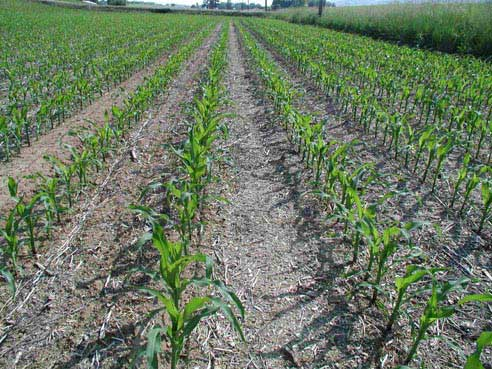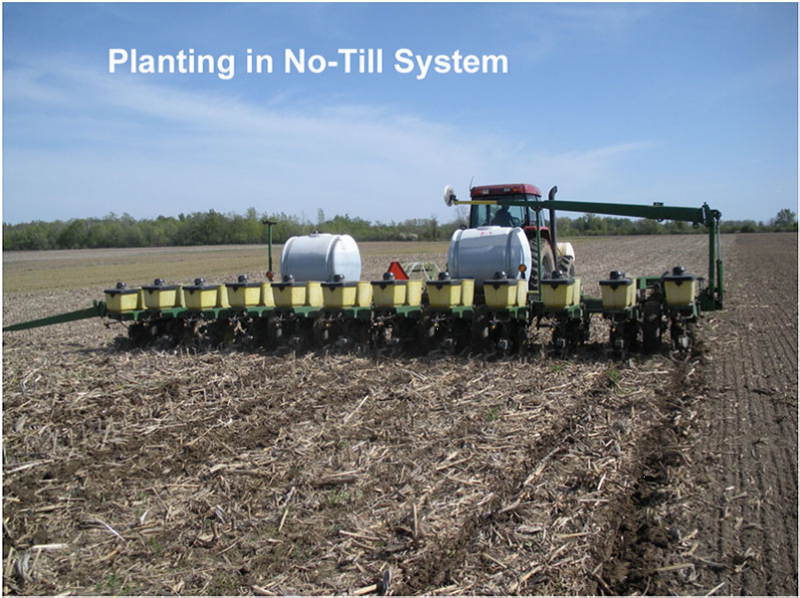Tillage is a mechanical modification of the soil. Intensive tillage can disturb the soil structure, thus increasing erosion, decreasing water retention capacity, reducing soil organic matter through the compaction and transformation of pores. No-till farming (also called zero tillage or direct drilling) is a way of growing crops or pasture from year to year without disturbing the soil through tillage. No-till is an agricultural technique which increases the amount of water that infiltrates into the soil and increases organic matter retention and cycling of nutrients in the soil. In many agricultural regions it can eliminate soil erosion. The most powerful benefit of no-tillage is improvement in soil biological fertility, making soils more resilient.
|
|
 |
|
No-till seeder Source: Gábor Ungvári’s presentation, NWRM Workshop 1 |
Maize planted without tillage |
| Benefits | Level |
|---|---|
|
BP6 - Increase infiltration and/or groundwater recharge
|
Low
|
|
BP7 - Increase soil water retention
|
Medium
|
|
BP8 - Reduce pollutant sources
|
High
|
|
BP10 - Reduce erosion and/or sediment delivery
|
Medium
|
|
BP11 - Improve soils
|
High
|
|
BP17 - Absorb and/or retain CO2
|
High
|
|
ES4 - Biodiversity preservation
|
Medium
|
|
ES5 - Climate change adaptation and mitigation
|
Medium
|
|
ES6 - Groundwater/aquifer recharge
|
Medium
|
|
ES8 - Erosion/sediment control
|
High
|
|
ES9 - Filtration of pollutants
|
Medium
|
|
PO2 - Improving status of physico-chemical quality elements
|
Medium
|
|
PO3 - Improving status of hydromorphology quality elements
|
Medium
|
|
PO5 - Improving quantitative status
|
Medium
|
|
PO7 - Prevent surface water status deterioration
|
Medium
|
|
PO9 - Take adequate and co-ordinated measures to reduce flood risks
|
Medium
|
|
PO11 - Better protection for ecosystems and more use of Green Infrastructure
|
High
|
|
PO12 - More sustainable agriculture and forestry
|
Low
|
|
PO14 - Prevention of biodiversity loss
|
Low
|

